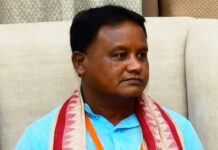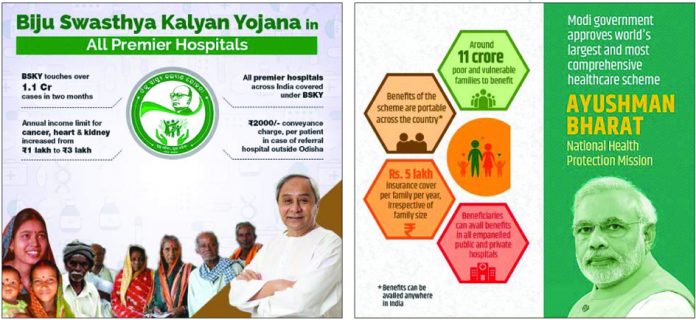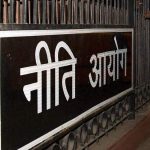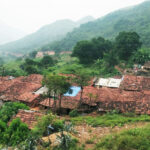Perception of growing closeness not withstanding BJD and BJP have been clashing over important issues like implementation of Ayushman Bharat which is a crucial health scheme of the Centre. Both the parties have their own points of view with BJD maintaining that its own health scheme is far superior to Ayushman Bharat. Meanwhile BJP is trying hard to strengthen itself in western Odisha
Ruling Biju Janata Dal’s (BJD) support for the BJP-led NDA government on some crucial issues in the recent past might have created an impression that the two parties are coming closer but they remain bitter political rivals in the state with serious differences on schemes like Ayushman Bharat, the flagship health project of Modi government, popularly known as Modicare.
Bhartiya Janata Party MPs from the state recently made a fervent plea for state government adopting and implementing the Centre’s Ayushman Bharat scheme. There is no denying the importance of the scheme but residents of the state are being deprived of its benefits because Odisha government has stuck to the stand that its own Biju Swasthya Kalyan Yojana (BSKY) is better.
The issue has clearly acquired political dimensions with Naveen Patnaik-led Biju Janata Dal (BJD) insisting that BSKY is far superior than Modicare. BJP and BJD had engaged in a verbal duel over the issue even at the time of elections. Prime Minister, Narendra Modi in the course of his campaign in the state had made several appeals to chief minister, Naveen Patnaik to adopt Ayushman Bharat but his pleas fell on deaf ears.
This is despite the fact that there are several implementation-related complaints against BSKY. Even though steps are being taken to address these issues the scheme is likely to encounter more teething troubles. Hence Odisha should have no hesitation adopting Ayushman Bharat in the larger interest of the people.
The problem is BJD has its own political compulsions in trying to prove that its health scheme is better than Modicare. It is a regional party that claims to follow a policy of equidistance from BJP and Congress. Even though the party in the last few weeks has supported the BJP-led NDA on some crucial issues and voted alongside it in the parliament it cannot ignore the fact that the saffron party happens to be its main political rival in the state.
The sharp decline of the Congress has boosted BJP’s fortunes in the state where it has emerged as the main opposition party. The saffron party also won eight Lok Sabha seats in the recently held elections. Hence BJD has reasons to treat BJP with caution notwithstanding the current bonhomie between chief minister, Naveen Patnaik and Prime Minister, Narendra Modi.
Significantly some of the recent decisions of the Centre have caused acute embarrassment to the state’s BJD government. For example the state government was rattled when the union environment ministry granted a two-year extension for work on the controversial Polavaram project coming up in Andhra Pradesh.
Extension was granted despite Centre being fully aware of Odisha’s objections to the project that threatens to submerge several tribal villages in the state’s Malkangiri district. Even mandatory public hearing for such projects has not been held in Odisha areas likely to be affected by the project.
Chief minister, Naveen Patnaik wrote a letter to the Prime Minister seeking his intervention in the matter and urging him to halt the project till Odisha ‘s concerns are addressed but nothing has happened so far. Considering that Polavaram was also a campaign issue for the BJD in the recent elections Patnaik would want the Centre to take his government’s point of view into consideration and call a halt to the project work.
As far as Polavaram is concerned the Modi government, which lacks a majority in the Rajya Sabha, seems to be under pressure from Andhra Pradesh chief minister, Jagan Mohan Reddy who is pushing the project aggressively. The Prime Minister obviously is not in a mood to annoy Reddy who can be a useful ally despite being non-aligned at the moment like BJD and the Telangana Rashtriya Samiti (TRS). All these three parties appear ready to cooperate with the Centre if the latter grants them their wishes.
On the Polavaram front Jagan seems to have outsmarted Naveen who now will have to think of other ways to protect the interests of the state. This is important because the issue has turned emotive and any failure on the part of Odisha chief minister is likely to be exploited by his opponents.
Yet another setback for Naveen Patnaik government has been the Centre’ s reluctance to grant Odisha special category state status. Union minister of state for finance, Anurag Thakur recently told the Lok Sabha that the government had no such proposal under its consideration. This issue, too, is politically significant as Patnaik has been raising the demand consistently since coming to power in 2000.
Odisha government’s tug of war with the Centre over the Ayushman Bharat Yojana has to be seen in this wider perspective of BJP and BJD’s political rivalry and the mounting pressure on Patnaik to be seen as being successful in safeguarding state’s interests.
On the other hand BJP seems to be focusing hard on western Odisha where it is stronger compared to the state’s coastal belt. Right from the beginning the party has been winning more seats in the western region while it has found it difficult to penetrate the coast where currently the Naveen Patnaik-led Biju Janata Dal (BJD) dominates.
The saffron party did extremely well in the western belt in the recent Lok Sabha elections winning all the five seats at stake in the region. In coastal Odisha it could win only two seats—Bhubaneswar and Balasore. Though these two victories were significant the realisation must have dawned on the party brass that it has to work harder to establish itself as a political force in the region.
One of the most important reasons for lotus sprouting in western Odisha is the demographic complexion of the region which has seen socio-cultural assimilation on a much bigger scale compared to the coast. It has cities like Rourkela which has been a socio-cultural melting pot ever since the state’s first steel plant was set up there. Since Rourkela Steel Plant (RSP) offered financially lucrative jobs it attracted people from far and wide. Even today the city’s population is a healthy mix of Odias and non-Odias who have made it their home.
There are other commercial hubs like Jharsuguda where you find such a population mix though not exactly on the same scale. One of the important factors contributing to this socio-cultural amalgamation is the proximity of some of the important western Odisha districts with states like Jharkhand and Chhattisgarh.
People on both sides of the border have not only business ties but also socio-cultural ties and this interaction has also influenced their thinking and their political choices. The BJP has been raising important issues like the area’s poverty, backwardness and its proneness to drought. In the eighties the party had launched a sustained campaign on these issues and was able to win the confidence of people who identified with its ideology. But it has not been able to do the same in the coastal belt.








































